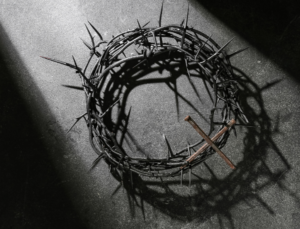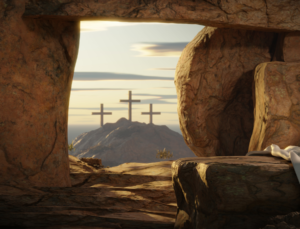This week, English Heritage came under criticism for the content of their Easter Adventure Quests hosted at several of their locations across the country, instead opting for teaching kids about a long-forgotten pagan goddess.
The Telegraph reported that there had been considerable concern expressed on social media in response to the trail which included a leaflet explaining about the goddess Eostre but failing to mention Christianity at all.
Now I’m all for learning about the stories behind some of our quirky traditions, many of which are totally unrelated to the sentiments we attach to them in the current day, but when it comes to Easter, let’s not whitewash away the most important event for over a quarter of the world’s population. Furthermore we are in danger of underestimating the impact of Jesus Christ and Christianity on the length and breadth of the heritage of these isles.
Bunnies, chocolate, eggs and spring aside, Eostre lends her name to the Christian festival. Whether she did so willingly is a moot point as she most likely didn’t exist in mortal or deified form. Historically Christians have been very good at incorporating pre-existing traditions and bringing the gospel to bear on stories that were already a part of the cultural narrative.

Some might argue this is cultural hijacking or goes to show that Chrisitan belief is just a bunch of fairy-tales. Others argue that a universal, one-true God would have truth elements woven through history and cultures, awaiting one story that would untangle the threads and make sense of humanity and God’s relationship with them.
So what’s the real story?
Well it’s about this carpenter who lives in a middle eastern backwater. He upsets the religious people of the day and they kill him. The story then claims that he comes back to life. Well if that’s all it is then surely Eostre hasn’t got to worry about the competition and we can let English Heritage do their worst.
So what’s the real story?
The question ultimately revolves around who Jesus is (not was, he’s alive again don’t forget).

For Christians the world over, He is the son of God. God who became human like us and lived a very ordinary life doing extra-ordinary things.
As humans we have made quite a mess of things. The sinfulness (or going against God’s original design for us as creation) of humankind is not contraversial, what is up for debate is how we are going to get out of the mess. How will we get justice and healing for the wrongs committed against us? How can we make up for the things we have done to others, and more significantly, to God?
Who’s going to pay the penalty incurred with such a monumental disaster? Who is going to rescue us?
The Easter story tells us how Jesus, who lived a perfect life and didn’t contribute to any of the mess, actually took the punishment we deserve.

Put simply, Jesus paid the price. Christ’s crucifixion and resurrection signifies redemption through his sacrifice. Jesus, the sinless son of God, died on the cross, taking the punishment for humanity’s sins. His resurrection on the third day demonstrates victory over sin and death, offering hope for eternal life and reconciliation with God. Jesus’s death and resurrection are the means to our forgiveness and being in a right relationship with God.
We can respond by either rejecting Jesus and his offer of forgiveness and reconciliation. Or we can accept it.
So what has that got to do with our relationships now?
Well if you want some sound relationship ‘how-tos’, there is nothing better than a model of unconditional and sacrificial love. There is nothing more powerful in a marriage than being able to forgive your spouse or being forgiven by them and knowing that they love you anyway. At FamilyLife, we believe that as you say sorry to God and receive his unconditional love and forgiveness (a vertical exchange) you have the means and method to live that out in your relationship with your partner (a horizontal exchange).
If you would like to know more about what Jesus accomplished at Easter and how to accept that offer, click here or get in touch.



